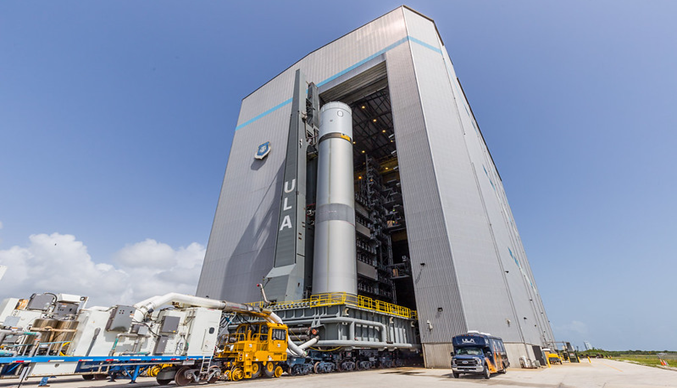United Launch Alliance uses FiberLink products to transport 4K/UHD video, audio, data, control signals & IRIG time codes over Fiber.


United Launch Alliance is harnessing the potential of space for humanity. We are dreamers inspired by possibilities not yet imagined, believers driven to broaden horizons, and doers combining technology, innovation, expertise, ingenuity and a commitment to the extraordinary.

United Launch Alliance (ULA) is a launch service provider — a company that manufactures and operates rockets that launch spacecrafts into orbit — for customers including the U.S. Department of Defense and NASA.
ULA is transforming the future of space launch, making it more affordable, accessible, and commercialized with its new, next-generation rocket, Vulcan. Vulcan is superior in reliability, cost, weight, and capability and provides a solution for the nation’s most critical need: reliable access to space.
Challenge
With every launch mission, Vulcan will have to make its way from the hangar or storage facility to the launch platform on a transport vehicle, which crawls along at about 1 mile per hour.
ULA must monitor and support the health of both the rocket and the vehicle during the journey to the launch pad and during the countdown. That task calls for small, high-density media-delivery products that can move 4K/UHD video up to a mile over single-mode fiber without fear of losing power. ULA also needs products that can carry audio, data, and control signals, and they must be flexible enough to transport IRIG time code in multiple standards over either single-mode or multimode fiber.
Finally, all products must be modular, as the environment is not suitable for equipment that is installed in racks.
Many solutions on the market lack the flexibility of operating in either single mode or multimode fiber, and they don’t cover the necessary range of IRIG standards (A through H) that ULA’s customers demand.
Most importantly, those products are unproven because they have seldom been deployed in these types of environments.
After having worked with Artel on previous projects on a smaller scale, ULA chose Artel once again to outfit the monitoring operation for Vulcan for the next several years. Unlike most other solutions, Artel products met all ULA’s requirements.
“Artel’s products have demonstrated to be of the highest quality for the best value and long life,” said Sheryl Platte, supply chain director at ULA. “They have been deployed in the past in similar applications and environments, so we were sure that they would do the job and eliminate any uncertainty about performance.”
ULA installed the following Artel products in multiple Vulcan-specific trailers that contain rocket and payload support electronics:
Use-Case
As ULA’s most powerful rocket, Vulcan promises to be the nation’s new workhorse in space launch — dubbed by ULA as “one system for all missions.” Vulcan is set to deploy 60% of the country’s national security payloads for the U.S. military through at least 2027.
Amazon has contracted Vulcan for its ambitious Project Kuiper, an initiative to increase global broadband access through a constellation of 3,236 advanced satellites in low Earth orbit. Vulcan will handle 38 launches — most of the Project Kuiper satellite constellation. ULA is renowned for its safety and mission assurance, making monitoring critical to protecting the rocket, the payloads, and the company’s reputation during so many important missions.
From within the trailers, the Artel products transmit signals from the launch pad area to the various ground segments in the complex (mission control, remote terminals, etc.) so that ULA technicians ensure everything is going as planned and support the missions. ULA monitor video (which will be recorded) and telemetry data from sensors that collect different measurements, like temperature. Human communications (audio) and accurate timing (IRIG) augment the video signals.
ULA technicians use the video and telemetry information to analyze launch performance and, most importantly, for monitoring in the event of failure.
Artel’s FiberLink products will provide reliable monitoring support for Vulcan missions for years to come — so ULA can keep a close eye on the rocket and the transport vehicles from transfer to blast-off.
“These products have been successfully deployed in similar environments, and their performance has been excellent,” Platte said. “We have every reason to believe the mission will be successful, and we’ll be able to capture critical information that leads to constant operational improvements.”
|
Company > Contact Us > About Patton > Jobs > Capabilities > Quality & Responsibility > Legal News & Events > Press Room/Releases > Training & Events > Library/Downloads |
| Sitemap |
Legal |
Privacy Policy |
Disclaimer |
![]()
![]()
![]()
![]()
![]()